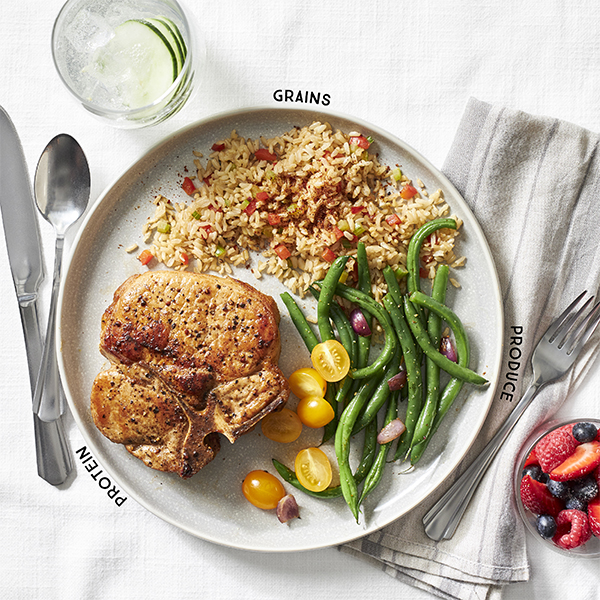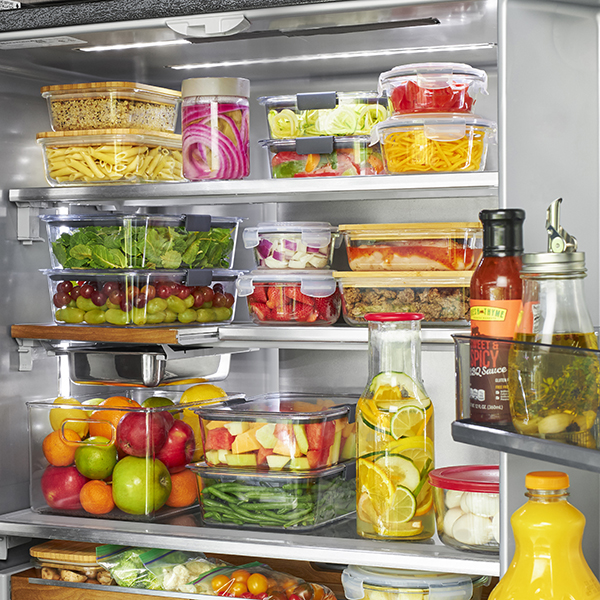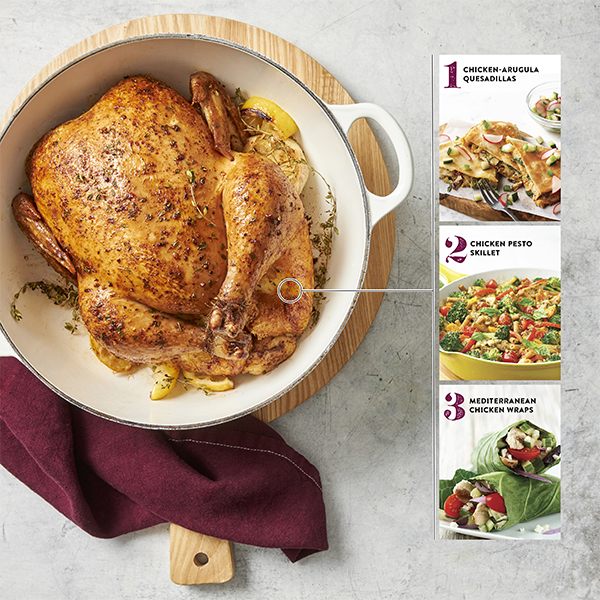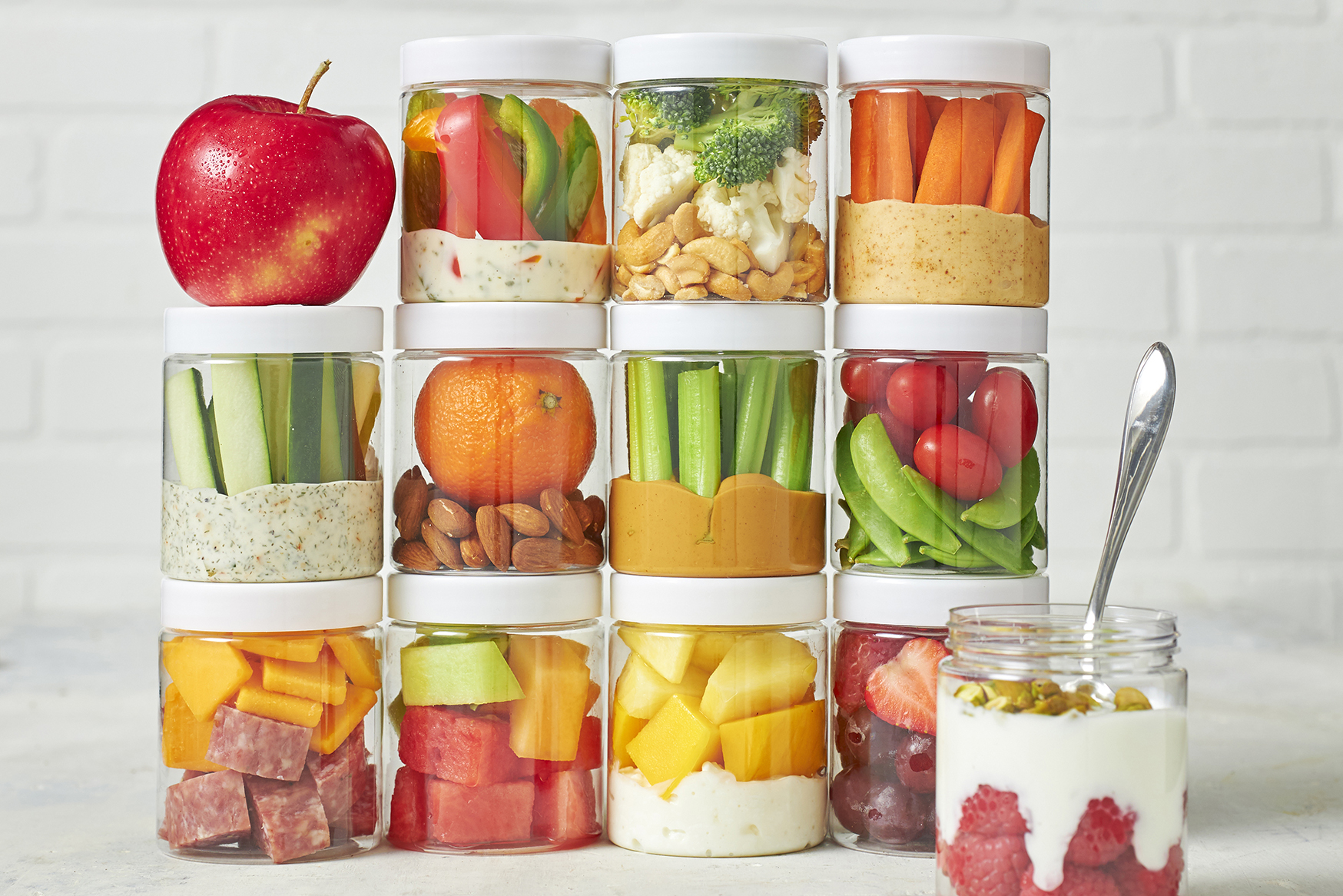Author: Fresh Thyme Market
Flexible Meal Planning
Take the Guess Work Out of Dinner Tonight
MAKE MEAL TIME FAMILY TIME
Create a menu for each day, using Fresh Thyme for inspiration and paying attention to featured and seasonal items. Ask family members for suggestions—favorite meals, seasonal preferences, and special occasions. As you plan, confirm that each meal has balanced nutrition, satisfies hunger, and appeals to taste, texture, and color. The USDA recommends a daily goal of 2 to 6 ounces of protein, 1 to 2 cups of fruit, 1 to 3 cups of veggies, and 3 to 8 ounces of grains.

Build a variety of meals around recipes with similar ingredients. An example: cook ground turkey then portion in 1- or 2-cup containers. One day, add a portion to sauce and pasta; another day, season for tacos.
Along with selecting food, have a ready supply of quality storage containers in a variety of sizes.
STORING & PREPPING

At home, store food safely and efficiently in fridge, freezer, or pantry. Then allow time to prep for a week’s worth of recipes, chopping, cooking, and storing vegetables, meats and poultry; and grains for nutritious recipes.
FLEXIBLE MEAL INGREDIENTS
Protein
The building block of the body, protein builds bone, muscle, and skin, and provides energy throughout the day. High protein foods are eggs, poultry, lean meat, seafood, beans, nuts and seeds. For best nutrition and health, vary protein sources.
Hard-Boiled Eggs: Boil eggs, cool, and refrigerate (below 40°F) unpeeled in a covered container. Peel for a snack, dice for sandwiches, or slice to top salads.
Roasted Chicken: Roast whole chicken to shred, chop, or slice. Refrigerate or freeze in resealable bags or containers. Add to sandwiches, salads, soup, stir-fry, casseroles, and these inspiring recipes from Fresh Thyme: Chicken Arugula Quesadillas, Chicken Pesto Skillet, and Mediterranean Chicken Lettuce Wraps.

Ground Meat: Cook and crumble ground turkey, chicken, beef, or pork. Refrigerate or freeze in meal-size amounts. Add cooked meat to pasta sauce, chili, casseroles, shepherd’s pie, tacos and burritos, and skillet dinners.
Beef & Pork Cuts: Grill, roast, or slow-cook large cuts of meat, then slice, dice, or shred to refrigerate or freeze. Thaw and heat for sandwich fillings, casseroles, salads, stir-fries, or fajitas.
Nuts & Nut Butter: Eat raw, toast or roast to sprinkle on salads, soups and main dishes. Nut butter is a nutritious protein snack that pairs well with fruit—such as fresh peaches—or a drizzle of agave nectar, or as a dip for fruits and veggies.
Produce

According to ChooseMyPlate.gov, people who include fresh fruit and vegetables in their daily diet have reduced risks for chronic diseases. Low in calories, fruits and vegetables provide fiber, potassium, vitamin C, and folic acid, and may contribute to healthy weight management. Prepped and ready to eat, fruits and veggies are convenient snacks, salad toppers and side dishes.
Vegetables: Prep and refrigerate bell peppers, broccoli, carrots, cauliflower, celery, onion, and radishes for quick add-ins to casseroles, omelets, salads, and sandwiches.
Fruits: Refrigerate tender fruits, such as grapes and berries, in containers in which they are packed, then wash right before using, blotting dry with paper towels. Add to cereal, salads, salsas, or serve on the side. Refrigerate leftovers in a container lined with paper towels, lightly covered.
Greens: Wash and dry leafy greens shortly before using. To store short-term, wash, wrap in a towel, bag, and refrigerate. Tear greens into pieces shortly before adding to salads, sandwiches, or wraps.
Note: For specific information on how to store, prep, or serve specific fruits and vegetables, ask a Fresh Thyme produce professional.
Grains
Fuel the body with the complex carbs of whole grains, which provide fiber, B-vitamins, and minerals, contribute to satiety to prevent overeating, and lower risks for heart disease. Grains that are easy to prep and store include rice, quinoa and pasta.
Rice: Cook unseasoned rice, cool slightly, and refrigerate to add to soup, stir-fry, or recipe ingredients. For breakfast or snack, sprinkle with sugar and cinnamon and dried fruit.
Grains: Cook barley, farro, millet, quinoa, rye berries, quinoa, and other ancient grains and oatmeal according to package directions. Refrigerate or freeze for individual servings or recipes. Use to stuff peppers, combine in salads or soup, reheat for breakfast, or serve as a side-dish.
Pasta: Cook a large batch of whole grain pastas to have ready for the week. After draining, drizzle 1 to 2 tablespoons of olive oil to prevent pasta from sticking. Store in covered containers. Reheat in a microwave, steamer basket, or plunge into boiling water to add to sauces. For casserole recipes, let pasta come to room temp.
